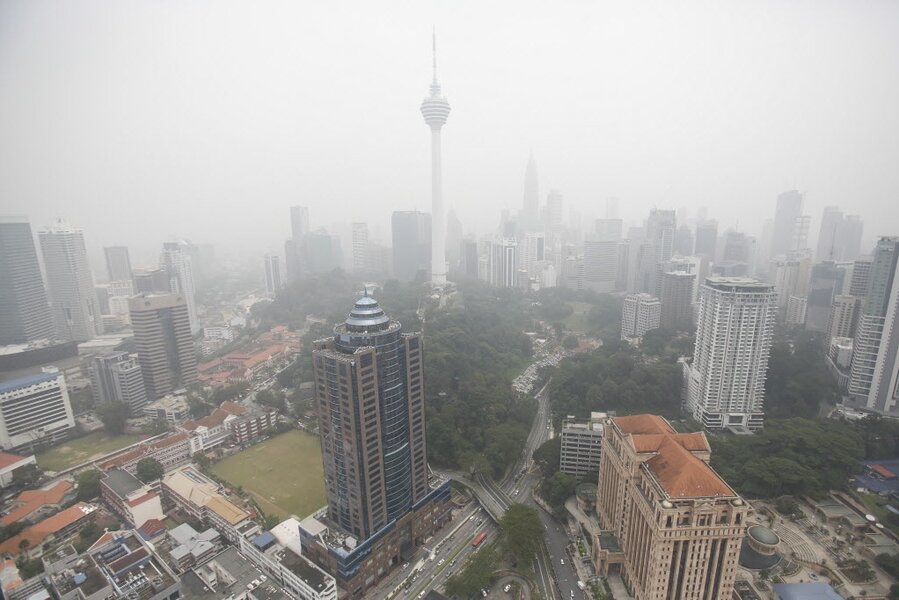Smartphones could detect pollution, thanks to a sensor breakthrough
Loading...
Monitoring air pollution around the world is a laborious, if not impossible task for the average citizen. Last year, the World Health Organization estimated toxic air pollution was responsible for around 7 million “premature deaths,” and called for an international effort to clean up the air.
In countries like India and China, which are home to the top two most polluted cities in the world – New Delhi and Beijing – the US Embassy offers a daily reading of particulate matter (P.M.) levels on its website. Anyone monitoring the site can keep an eye on the best time to go for a run – or sometimes, just to step outside.
But a new method developed by Australian and Chinese scientists might be revolutionizing our ability to stay informed about toxic pollution levels through a smartphone app that can detect dangerous levels of nitrogen dioxide in the air.
A recent discovery by scientist Kourosh Kalantar-zadeh at RMIT’s Centre for Advanced Electronics and Sensors in Melbourne found that tin disulphide can be used to detect nitrogen dioxide levels – one of the most toxic forms of pollution.
According to the report, the tin can be manufactured cheaply (costing roughly one Australian dollar per sensor unit) , and can be used to make personalized, individual sensors. Although scientists are still working to develop software, the method has already been proven to work using sensors that absorb nitrogen dioxide gas molecules onto flecks of tin disulphide.
Air pollution is a lingering threat that, as of this year, is on the rise. A global problem, air pollution is most serious in parts of Southeast Asia, the Western Pacific region, and the eastern Mediterranean. In 2012, an estimated 3.7 million deaths were attributed by the World Health Organization to air pollution – the number has since climbed to seven million in 2014.
While countries have taken measures in recent years to reduce air pollution, the challenges still outweigh the triumphs.
One of the biggest problems with air pollution is its invisibility. It's not always possible to see when the air is dangerous. Which is why a sensor for a smartphone is a step in a groundbreaking, and promising, direction. The discovery was released Tuesday morning, but the team of scientists is hopeful an app will be developed soon. Their goal is to keep the cost of monitoring air pollution levels low and to keep it as accessible as possible to the public.
“A lack of public access to effective monitoring tools is a major roadblock to mitigating the harmful effects of this gas but current sensing systems are either very expensive or have serious difficulty distinguishing it from other gases,” Mr. Kalantar-zadeh said in a report issued by RMIT University. “The method we have developed is not only more cost-effective, it also works better than the sensors currently used to detect this dangerous gas.”








